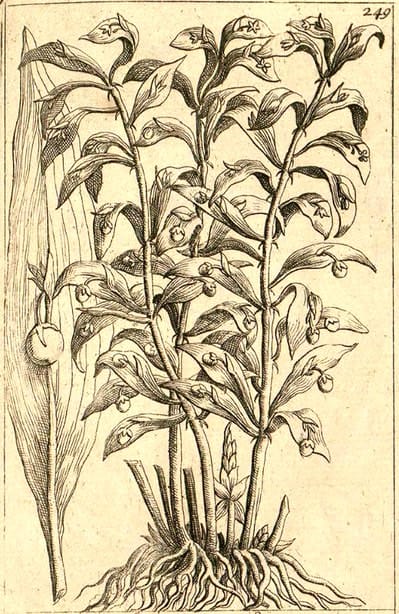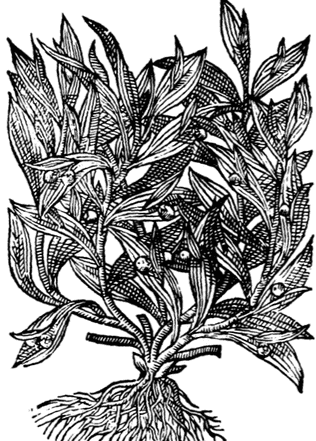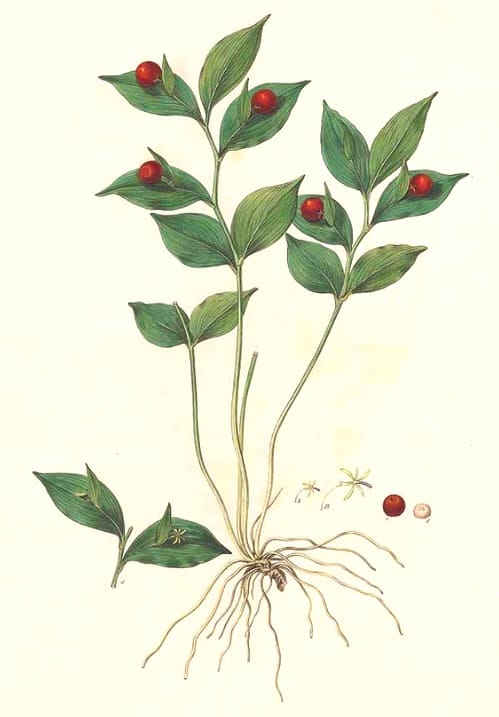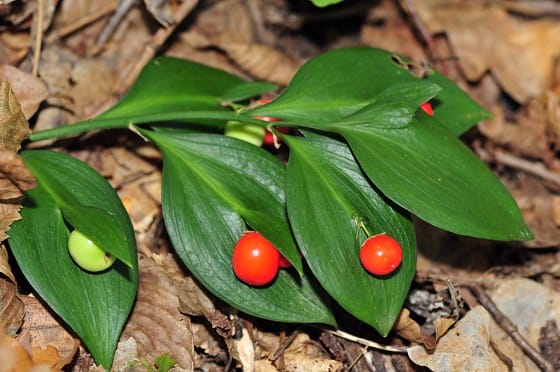Hippoglossum, HorsetongueDouble-tongue, Tongue Blade, Tongue upon TongueBilingua (Latin) |

|
 Hippoglossum
HippoglossumJ. Barrellier, Plantae per Galliam, Hispaniam et Italiam observatae, (1714)
 Lesser Horsetongue
Lesser HorsetongueSalmon, Botanologia, 1710
 Hippoglossum
HippoglossumJ. Sibthrop, J.E. Smith, Flora Graeca, vol. 10 (1840)
 Ruscus hypoglossum
Ruscus hypoglossum(Photo by Andrew Karpov) (Wikimedia)
Botanical name:
Ruscus hypoglossum
Greater and Lesser varieties were known
Parts used:
Whole Herb; Root
Temperature & Taste:
Warm, dry.
Classifications:
Åperitive, Hysteric, Emmenagogue, Traumatic (Vulnerary)
Constituents:
Steroidal Saponins
Uses:
1. Moves the Blood, Promotes Menstruation:
-Suffocation of the Womb, Vapors, Hysteria, PMS
-Amenorrhea
-Promotes Labor, clears Afterbirth
-Postpartum Pain; continually taken after Childbirth to cleanse and restore tone to the Womb.
2. Moves the Blood, Clears Stasis:
-Headache
-also for ‘Imperfect Speech’ (decoction in wine)
-Paralysis (various preparations including oily tincture)
-Chronic, Foul and Spreading Ulcers anywhere in the body
-also for Hernia
3. Clears Damp, Promotes Urine:
-Strangury, suppressed or painful urination, dribbling urine
-Gravel, Stones
-the oily tincture (infused in oil) was commended for strangury, Gravel and Stones (Salmon)
4. Externally:
-as a gargle (leaves and roots) for sore and swollen mouth and throat, and swollen glands under the tongue
-Running and Spreading Sores and Ulcers
-was used as an amulet against Headache (Dioscorides)
Dose:
Powder: 2–5 grams
When used to induce or promote Labor, 1 dram (3 grams) can be given in wine every 2 hours until 3 or 4 doses have been given.
Tincture (1:5): 1–2 drams
Juice: 2–3 spoonfuls in wine
Acid (Vinegar) Tincture: enough added to water give a pleasant acidity.
Oily Tincture: 10–30 drops on sugar
Main Combinations:
1. Hernia, powders of Cattail Pollen, Betony, Gladioli root, Horsetongue leaves, 1 dram mixed with Egg Yolk and eaten daily for 30 days (Gerard)
Major Formulas:
Cautions:
Not used during Pregnancy
Main Preparations used:
1. In vitro determination of the spermicidal activity of plant saponins.
2. Identification of Ruscus steroidal saponins by HPLC-MS analysis.
